Caring for a patient with osteogenesis imperfecta (OI), often referred to as “brittle bone disease,” is a journey that demands both unwavering dedication and a profound understanding of this rare genetic condition.
OI is a disorder characterized by bones that are extraordinarily fragile and prone to fractures, along with potential complications affecting various bodily systems.
As a caregiver, your role is not just to provide physical assistance but also to be an emotional pillar, enhancing the patient’s quality of life. In this article, we show you how to care for someone with OI. Our aim is to equip you with a comprehensive understanding of the condition, strategies for daily care, and the vital nuances of emotional support.
By the end of this piece, you will have the knowledge and insights required to provide the best possible care for someone living with OI. However, if this is a task you cannot handle and you are in Indiana, reach out to us at Good Hands Home Care, where a team of caregiving professionals will adequately care for OI patients.
What You Need To Know About Osteogenesis Imperfecta
Before we embark on the journey of caregiving, it’s essential to have a comprehensive understanding of what OI entails. Osteogenesis imperfecta is caused by a genetic mutation that affects collagen production. Collagen is a protein critical for the strength and flexibility of bones.
OI is present at birth. A child born with OI may have very soft bones that break (fracture) easily, bones that are not formed normally, and other problems. Signs and symptoms may range from mild to severe.
Types of Osteogenesis Imperfecta
There are multiple types of OI, each varying in severity and potential complications. It’s paramount to consult with the patient’s healthcare team for precise information on their specific type and its implications for their daily life.
The OI types are as follows:
- Type I: It is mild and the most common type of OI. There are few fractures and deformities
- Type II: The most severe type. Signs include very short arms and legs, a small chest, and a soft skull.
- Type III: The most severe type is in babies who don’t die as newborns. Characterized by slightly shorter arms and legs than normal and arm, leg, and rib fractures.
- Type IV: Symptoms are between mild and severe. A baby with this type may not have straight arms and legs and may not grow normally.
- Type V: This is similar to type IV. Symptoms may be moderate to severe. It is common to have enlarged, thickened areas in the areas where large bones are fractured
- Type VI: This type is very rare. Symptoms are medium and similar to those of type IV.
- Type VII: It may be like type IV or type II. It is common to have shorter than normal height in the normal upper arm and thighbones.
- Type VIII: Similar to types II and III. Very soft bones and severe growth problems.
Caring for a Patient with Osteogenesis Imperfecta
Caring for an OI patient will require some level of attention and care. Here is how to adequately care for patients who have osteogenesis imperfecta as a caregiver:
1. Effectively manage their fractures
OI patients are at a significantly increased risk of bone fractures. Recognizing the signs of a fracture is vital, as is being prepared to provide immediate first aid and support while awaiting medical assistance.
2. Provide mobility assistance if needed
Depending on the severity of OI, patients may require mobility aids such as wheelchairs or walkers to reduce the risk of bone injuries. Ensuring these aids are correctly fitted and maintained is crucial.
Here is a guide we curated on how to make the right choice of assistive technology for caregiving. Ensure to work with their healthcare personnel for a tailored-to-fit mobility device.
3. Manage their pain and limit it as much as you can
Chronic pain is a common challenge for OI patients. Collaborate closely with their healthcare team to develop an effective pain management plan, which may include medications and other pain relief strategies.
These chronic pain management strategies have proven to be effective home care strategies for pain management. Ensure a healthcare professional approves of any of these steps.
4. Encourage physical therapy
Physical therapy can play a significant role in helping OI patients improve their muscle strength, mobility, and coordination while minimizing the risk of fractures. Seek a qualified physical therapist experienced in OI for tailored exercise programs.
5. Ensure they have adequate nutrients and supplements
OI can affect bone health, so it’s essential to consult with a registered dietitian to ensure the patient’s diet is optimized for bone strength. Supplements, such as calcium and vitamin D, may be recommended based on their specific needs.
6. Be an emotional backdrop for them
Caring for someone with OI can be emotionally taxing for both the caregiver and the patient. You have to do all you can to provide effective emotional support for them. Practice empathy.
7. Encourage open communication
Create an environment where the patient feels comfortable expressing their feelings, fears, and concerns. Act as a compassionate and empathetic listener, offering reassurance and understanding.
Leverage our guide on 15 effective communication strategies in client care to know what to say and how to say it while practicing active listening.
8. Suggest they become part of support groups
Connect with local or online support groups designed for caregivers and OI patients. These groups can offer invaluable insights, emotional support, and a sense of community that can be immensely comforting.
9. Encourage Independence
While your support is crucial, encourage the patient to be as independent as their condition allows. This can boost their self-esteem and confidence while maintaining a sense of normalcy in their lives.
10. Continually learn
Continual education about OI is key to becoming an effective caregiver. Understand the various types of OI and how they affect the patient to provide the best possible care.
Conclusion
Caring for a patient with osteogenesis imperfecta requires not only unwavering patience and compassion but also a dedication to enhancing their quality of life.
By providing comprehensive care, effective pain management, and the emotional support they need, you can significantly improve the well-being of your loved one living with OI.
Collaborate with healthcare professionals and engage with support groups to ensure you’re well-prepared to navigate the unique challenges posed by this rare genetic condition.
We hope you found this guide helpful.
If you are in Indiana and looking for how to access quality care services and personalized client care plans, visit Good Hands Home Care Agency, where care is offered with professionalism and efficiency.





